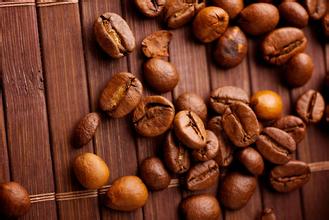The part of Italian coffee that needs to be cleaned frequently
Introduction to the part of Italian coffee that needs to be washed frequently.
The cleaning of the coffee residue from the brewing head can separate the filter net and the copper block on the brewing head. The filter net is the part that comes into direct contact with the coffee powder every time the coffee is brewed. Because the coffee powder is pressed, the coffee liquid will flow out of the powder bowl only when it is pressed to a certain extent, so the coffee liquid may flow back before it seeps out, and some coffee residues may still be in the filter. If it is not cleaned for a long time, it may affect the taste of the coffee and it is also very unhygienic. After cleaning the copper, you can release water, because after backflushing, you may leave some powder in the pipe of the coffee machine, which is edible, but it is better to put it clean.
The cleaning of the coffee residue from the brewing head can separate the filter net and the copper block on the brewing head. The filter net is the part that comes into direct contact with the coffee powder every time the coffee is brewed. Because the coffee powder is pressed, the coffee liquid will flow out of the powder bowl only when it is pressed to a certain extent, so the coffee liquid may flow back before it seeps out, and some coffee residues may still be in the filter. If it is not cleaned for a long time, it may affect the taste of the coffee and it is also very unhygienic. After cleaning the copper, you can release water, because after backflushing, you may leave some powder in the pipe of the coffee machine, which is edible, but it is better to put it clean.
Because it is a blind bowl, so the water will not flow out, the hot water will dissolve the powder, because the pressure water will flow back into the pipeline, so the powder will backwash into the pipeline and play a role in cleaning the pipeline. After about 7 seconds of pressure, stop the pressure, due to the pressure, water will be ejected from the pressure relief valve, and may even be splashed from the drip tank below, so I will be used to putting a layer of towel on top so that no water will spill out.

Important Notice :
前街咖啡 FrontStreet Coffee has moved to new addredd:
FrontStreet Coffee Address: 315,Donghua East Road,GuangZhou
Tel:020 38364473
- Prev

Introduction to the production of espresso requiring American Coffee
The production of espresso requires American coffee. 1. Grind the right amount of coffee powder with a bean grinder. Note that the thickness of the powder should be adjusted. Here's what's going on. 2. Put the powder into the handle of the coffee machine. 3, press it with a powder press, press it twice, and gently for the first time. 4. Put your hand on the coffee machine and turn on the coffee switch. 5. Pay attention to the flow rate of coffee. 25-30 ml. The best time is 20-3.
- Next

How different do Chinese, American, Japanese and British people drink coffee?
Although the market share of freshly ground coffee is only 2%, it has grown rapidly in China in recent years, with an average of more than 20%. This is also the future opportunity for Starbucks, Costa and other coffee shop chains in China. According to London-based Coffee International, coffee consumption in China has grown at an annual rate of 15%, compared with a global average of 2%. The bottled ready-to-drink coffee is high.
Related
- Beginners will see the "Coffee pull flower" guide!
- What is the difference between ice blog purified milk and ordinary milk coffee?
- Why is the Philippines the largest producer of crops in Liberia?
- For coffee extraction, should the fine powder be retained?
- How does extracted espresso fill pressed powder? How much strength does it take to press the powder?
- How to make jasmine cold extract coffee? Is the jasmine + latte good?
- Will this little toy really make the coffee taste better? How does Lily Drip affect coffee extraction?
- Will the action of slapping the filter cup also affect coffee extraction?
- What's the difference between powder-to-water ratio and powder-to-liquid ratio?
- What is the Ethiopian local species? What does it have to do with Heirloom native species?

